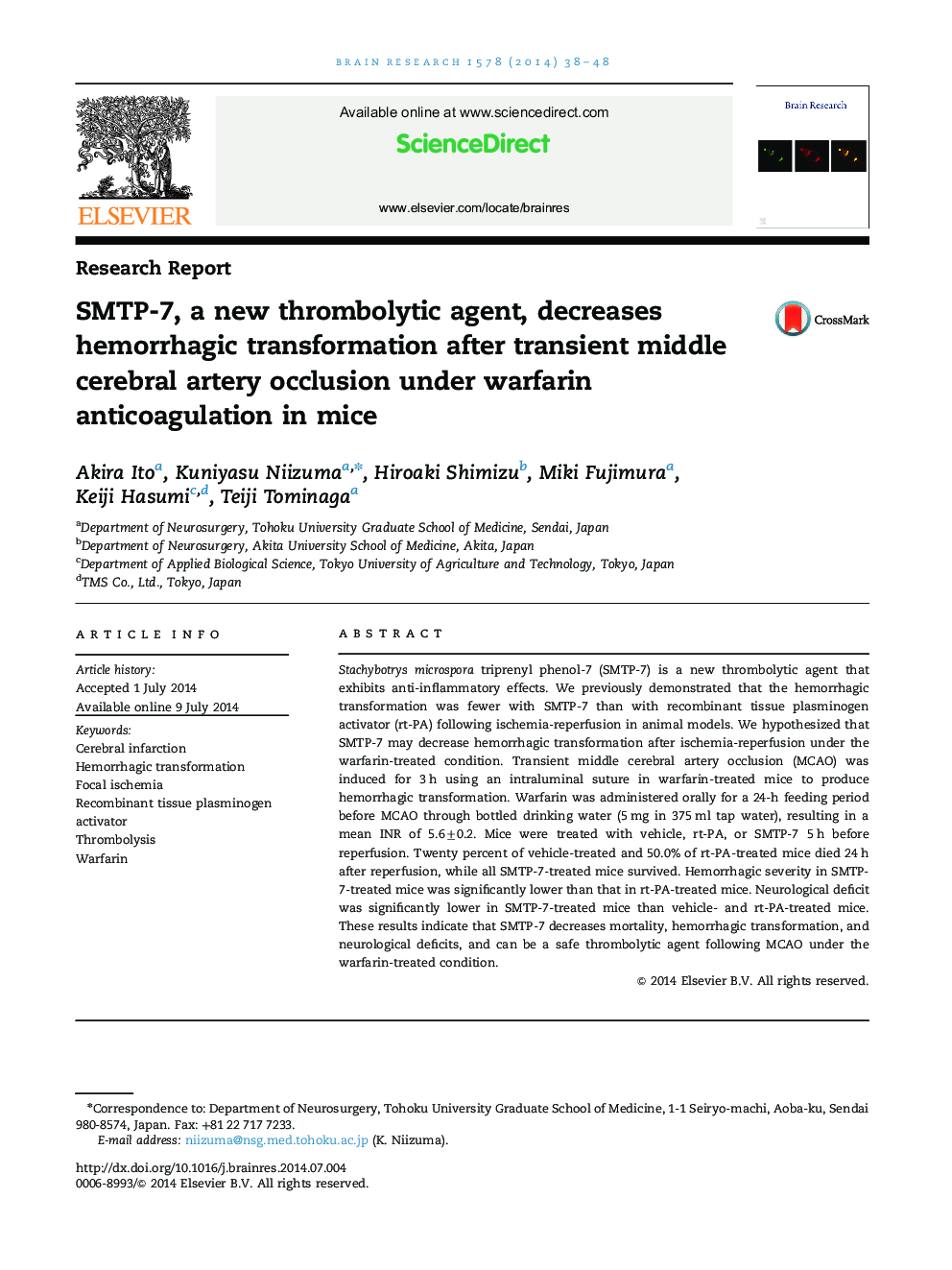| Article ID | Journal | Published Year | Pages | File Type |
|---|---|---|---|---|
| 6263358 | Brain Research | 2014 | 11 Pages |
â¢SMTP-7 is a new thrombolytic agent that exhibits anti-inflammatory effects.â¢We hypothesized SMTP-7 decreases hemorrhagic transformation.â¢MCAO was induced in warfarin-treated mice to produce hemorrhagic transformation.â¢SMTP-7 decreased mortality, hemorrhagic transformation and neurological deficits.
Stachybotrys microspora triprenyl phenol-7 (SMTP-7) is a new thrombolytic agent that exhibits anti-inflammatory effects. We previously demonstrated that the hemorrhagic transformation was fewer with SMTP-7 than with recombinant tissue plasminogen activator (rt-PA) following ischemia-reperfusion in animal models. We hypothesized that SMTP-7 may decrease hemorrhagic transformation after ischemia-reperfusion under the warfarin-treated condition. Transient middle cerebral artery occlusion (MCAO) was induced for 3 h using an intraluminal suture in warfarin-treated mice to produce hemorrhagic transformation. Warfarin was administered orally for a 24-h feeding period before MCAO through bottled drinking water (5 mg in 375 ml tap water), resulting in a mean INR of 5.6±0.2. Mice were treated with vehicle, rt-PA, or SMTP-7 5 h before reperfusion. Twenty percent of vehicle-treated and 50.0% of rt-PA-treated mice died 24 h after reperfusion, while all SMTP-7-treated mice survived. Hemorrhagic severity in SMTP-7-treated mice was significantly lower than that in rt-PA-treated mice. Neurological deficit was significantly lower in SMTP-7-treated mice than vehicle- and rt-PA-treated mice. These results indicate that SMTP-7 decreases mortality, hemorrhagic transformation, and neurological deficits, and can be a safe thrombolytic agent following MCAO under the warfarin-treated condition.
